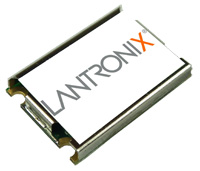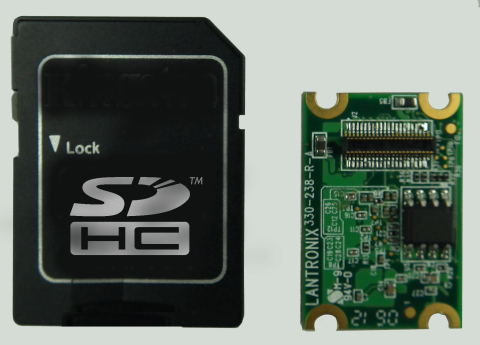xPico: Tiny Embedded Server Smaller Than an SD Card
Lantronix announced the xPico, which the company claims is the world's smallest embedded device server.
With a size of 24mm x 16.5mm,s lightly smaller than an SD memory card, the chip integrates a full IP stack and web server functionality, a DSTni-EX enhanced 16-bit, 48 MHz or 88 MHz x86 processor, 256 KB SRAM and 512 KB flash memory as well as 384 KB storage space for web pages, support for 256-biy AES encryption and serial data rates between 300 bps to 921 Kbps.
Lantronix said that it will be designing the chip into its "entire product offering", which includes networking and IT management products. According to its manufacturer, the chip can be used out of the box without the need of special software development.
The company will be selling the chip for $23 per unit in 1000-unit orders and expects that the xPico will be available in the second half of this year.
Get Tom's Hardware's best news and in-depth reviews, straight to your inbox.

Douglas Perry was a freelance writer for Tom's Hardware covering semiconductors, storage technology, quantum computing, and processor power delivery. He has authored several books and is currently an editor for The Oregonian/OregonLive.
-
Marco925 And to think we paid $2000+ for big clunky machines that perform like these 25 years ago.Reply -
jacobdrj Tom's:Reply
I find this article very interesting. However, I am not quite sure what the potential use case is for this device, or its advantage over its larger competitors (other than straight size).
Please elaborate. -
rubix_1011 I am assuming this would serve in some kind of plug-n-play network equipment for lightweight web/interface functionality and/or advanced networking to provide additional functionality for an edge interface server that can be hosted as a lightweight device as a piggy-back to external router or DMZ?Reply -
jaber2 I can use these to run web servers, imagine selling these as dedicated servers with cloud storage.Reply -
saturnus In addition to what rubix_1011 said above I'm assuming one of the primary purposes would be to enable internet access on device that has a SD slot but lacks a USB master device, so that pages would be temporarily stored in the cache to be viewed by the device without technically having an interface for the internet in the form of a traditional browser.Reply -
halcyon saturnusIn addition to what rubix_1011 said above I'm assuming one of the primary purposes would be to enable internet access on device that has a SD slot but lacks a USB master device, so that pages would be temporarily stored in the cache to be viewed by the device without technically having an interface for the internet in the form of a traditional browser.Reply
...yeah...what he said. -
jhansonxi jaber2I can use these to run web servers, imagine selling these as dedicated servers with cloud storage.Too slow for that but they would be good for remote sensor monitoring.Reply

